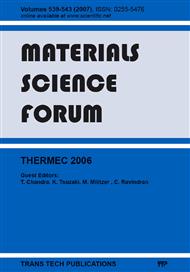p.1373
p.1379
p.1385
p.1391
p.1397
p.1403
p.1409
p.1415
p.1421
A Mathematical Model of Ultra-Thin Catalyst Layer in PEFC
Abstract:
A mathematical model for an ultra-thin catalyst layer in PEFCs is introduced. It utilizes Nernst-Planck and Poisson equations. Calculated polarization curves are shown to compare favourably with published experimental data for ultra-thin catalyst layers. Aspects of current conversion, reactant, current distribution, and catalyst utilization are explored. The effect of catalyst layers thickness on the Pt utilization is discussed. This study gives us a better understanding of transport and reaction at the mesoscopic scale and it furnishes the directions for optimization of this type of catalyst layer.
Info:
Periodical:
Pages:
1397-1402
Citation:
Online since:
March 2007
Authors:
Price:
Сopyright:
© 2007 Trans Tech Publications Ltd. All Rights Reserved
Share:
Citation:


